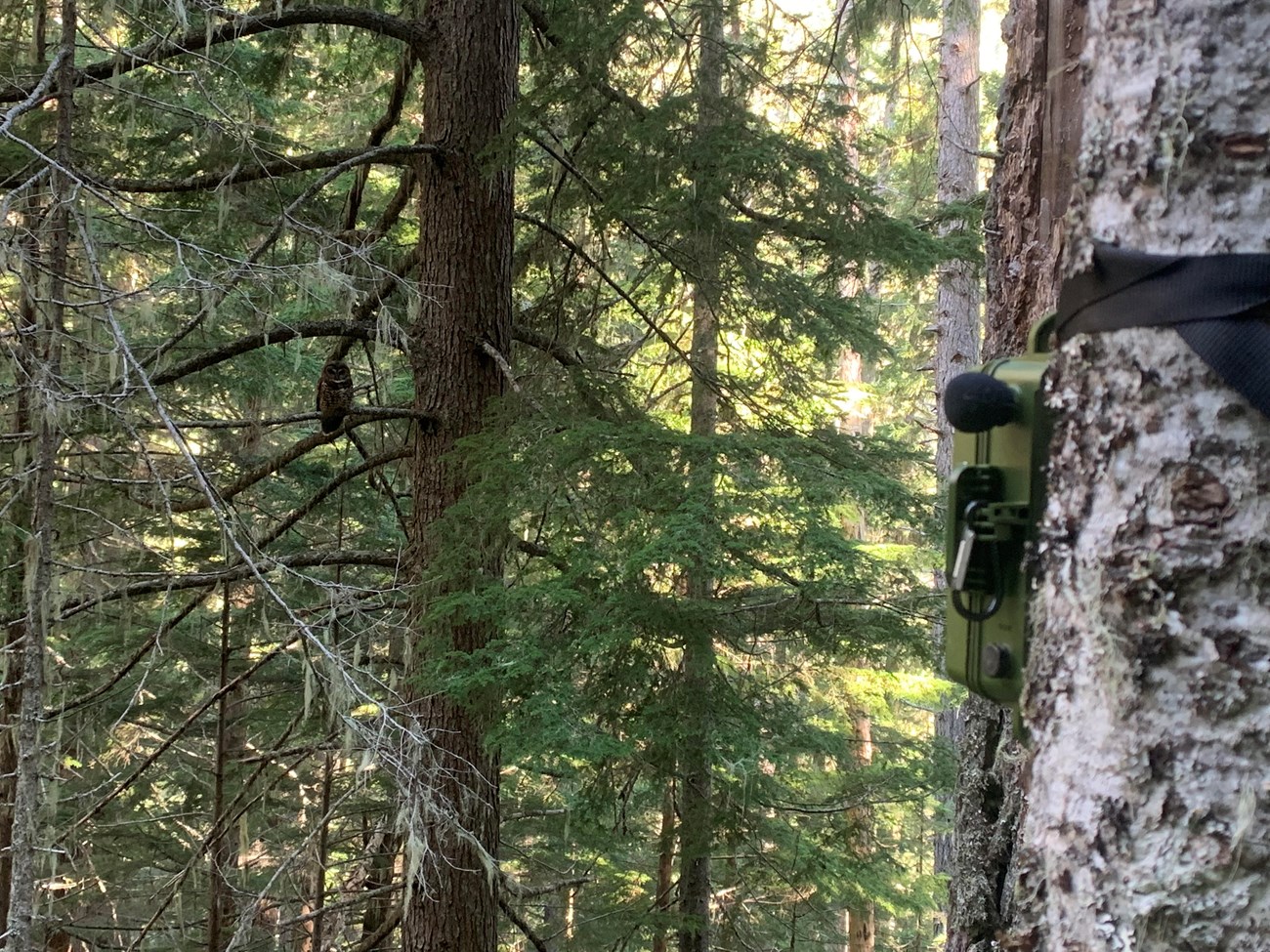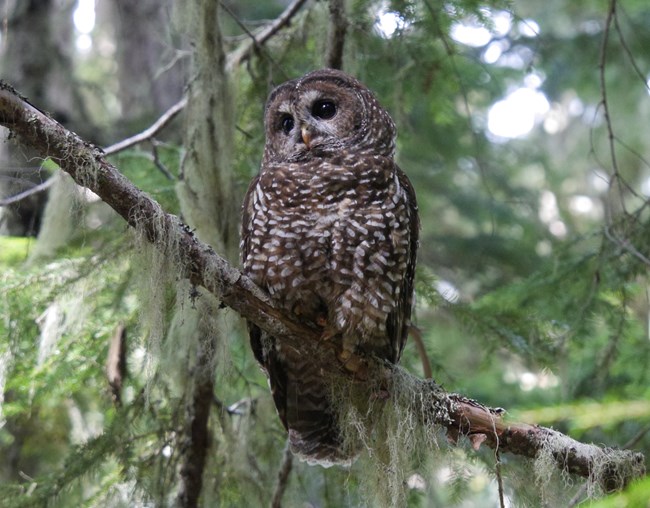Last updated: March 11, 2021
Article
Listening for Owls: A Multi-agency Collaboration to Preserve Spotted Owl Habitat Across the West

NPS / Madison McConnell
The story of the northern spotted owl (listed as threatened under the Endangered Species Act) has been one of drama and decline. Reliant upon older growth forests throughout their range, the species was at the center of fierce debates on forest management decades ago. Today, threats to their persistence also include changes in habitat due to increased fire frequency and the spread of barred owls, which out-compete spotted owls and continue to expand their range in the west.
In 1994, the multi-agency Northwest Forest Plan was initiated to address management needs of federal forests and provide habitat for the northern spotted owl, as well as other species dependent on these older growth forests. The plan was designed to work beyond traditional boundaries. It encompasses 24 million acres and multiple agencies, including the US Forest Service, Bureau of Land Management, Environmental Protection Agency, and National Park Service. For over 25 years, biologists have collected spotted owl monitoring data to inform forest management that is guided by the plan.
Yet, surveying for spotted owls is no simple task. Biologists work at night, listening for owl calls and, if heard, follow up with early morning observations to determine whether the owls detected are nesting successfully. From the Washington’s Olympic Peninsula to Marin County, California, national parks provide habitat for the northern spotted owl and National Park Service biologists contribute to monitoring efforts. In fact, monitoring shows that the northern spotted owls found in Point Reyes, Golden Gate, and Muir Woods appear to be doing better than anywhere else in their range.

NPS
In the coming year, the Northwest Forest Plan’s spotted owl monitoring design is transitioning to remote acoustic monitoring (also known as passive monitoring). With a focus on continuing the collection of accurate population data, the new method will record owl calls, detect other rare species that vocalize at night, increase crew safety, and enhance long-term project efficiency by lowering costs.
Field biologists will place small, battery-powered audio recording units (ARUs) at pre-selected sites in forested habitat across the northern spotted owl range in Washington, Oregon, and northern California. The ARUs will remain in place for six weeks. After collecting them, biologists will download the recordings, which will be analyzed using software. Acoustic recorders will monitor spotted owl presence and trends over multiple years, and simultaneously document the threat posed by barred owls.
Olympic, North Cascades, Mount Rainer, Redwood, and Crater Lake National Parks, in addition to Point Reyes, Golden Gate, and Muir Woods are (or soon will be) contributing acoustic data to monitor owls and inform the interagency Northwest Forest Plan’s conservation efforts. Through this work, the National Park Service will continue to fulfill its role in this model of landscape-scale planning needed to overcome some of the greatest conservation challenges that we face.
Other facts about spotted owls:
- To hear their call, visit https://www.allaboutbirds.org/guide/Spotted_Owl/overview and click on ‘Listen’
- There are three subspecies of spotted owls: the northern, California, and Mexican spotted owl
- California spotted owls are found in NPS units from Lassan Volcanic National Park south to Sequoia National Park. Unfortunately, they face similar threats to the northern spotted owl and are declining in much of their range.
- Mexican spotted owls are found across the southwest in AZ, UT, and as far away as Texas. Biologists at several NPS units monitor their presence and also use ARUs as a monitoring tool.
Tags
- crater lake national park
- golden gate national recreation area
- mount rainier national park
- muir woods national monument
- north cascades national park
- olympic national park
- point reyes national seashore
- redwood national and state parks
- washington
- oregon
- california
- northwest forest plan
- birds
- owls
- northern spotted owl
- threatened species
- threatened and endangered species
- monitoring
- acoustic monitoring
- collaboration
